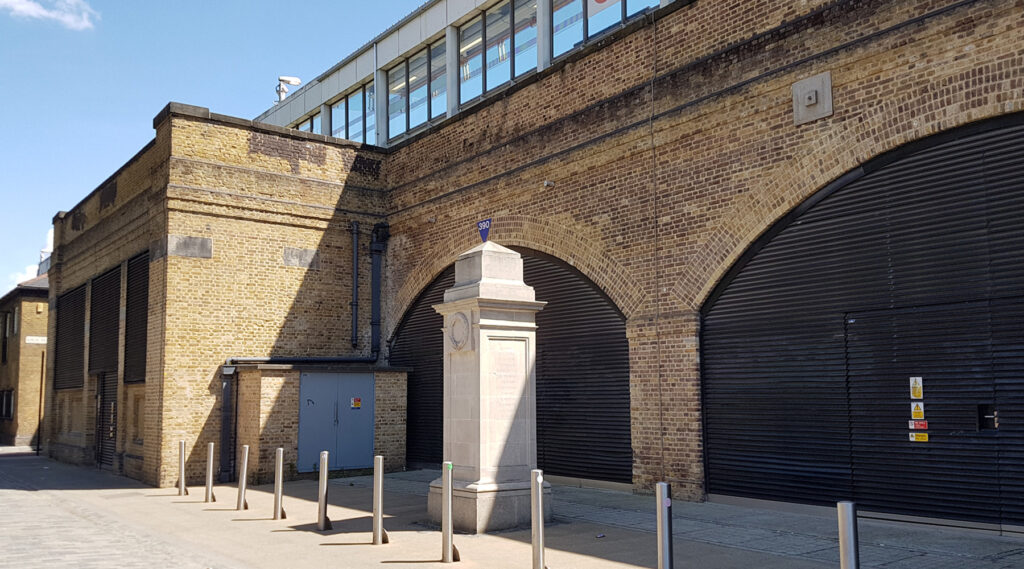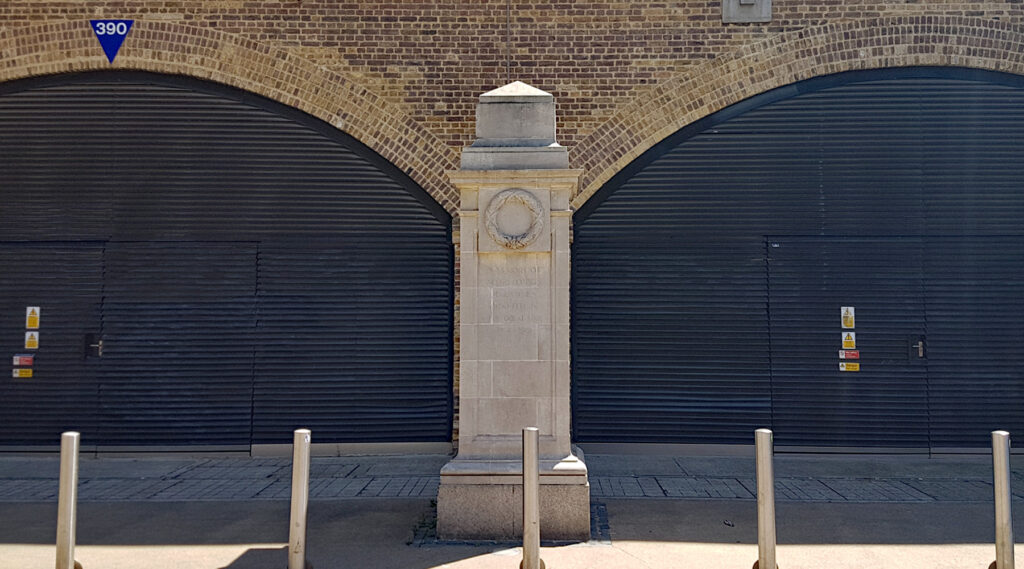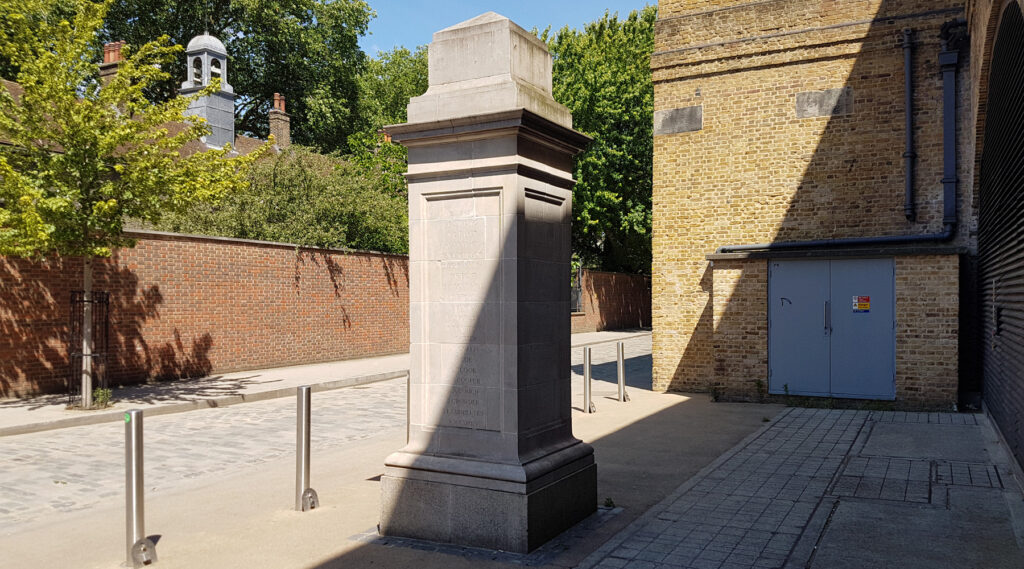If you walk north from Hoxton station, you might spy a Cenotaph, sitting in a recess next to this north London railway station.
It’s actually the War Memorial of the North London Railway, and originally could be seen in the now-demolished Broad Street station that used to sit next to Liverpool Street station.
The memorial to the 64 fallen railwaymen of the North London Railway was unveiled inside Broad Street station on Thursday 10th February 1921. The memorial was designed by Reginald Wynn Owen, architectural assistant with the railway’s Civil Engineer’s Office, at a cost of £501.
You can just about see it at the back of this old Thames News clip as the camera moves around the ticket hall at 3:58.
When Broad Street was demolished in 1986, the memorial was put into storage, then later relocated to the north car park at Richmond station in 1989. However, as a memorial to the North London railway, it was often felt this was an awkward location, and when the London Overground was being created, it was felt that moving the memorial back north of the river would be a good thing to do.
The new location for the memorial was chosen to be doubly suitable as the London Overground here reuses the former railway tracks that used to run into Broad Street station. Now they curve away to Shoreditch, but the viaduct here is still the same one that would have carried the North London Railway.
The memorial was rededicated in its new location outside Hoxton station in 2011.
The four sides have sunk panels, in one of which is inscribed: “In memory of North London railwaymen who fell in the Great War 1914-1919”. The names of 65 fallen railwaymen are carved into the other three panels and above the inscription there is a block of stone with a raised wreath of laurel leaves carved on it.
Although planned for 64 men, a 65th was added out of alphabetical order after the memorial was completed.
An interesting note is the dates on the memorial – the Great War took place between 1914-18, but this memorial says 1914-19, which is thought to be because two of the men named died of their wounds in 1919, so were included in the rollcall of the fallen.
The memorial was later given listed status protection in 2018.
You can find it next to Hoxton Overground station, at street level adjacent to the northbound platform. When you leave the station and have the Museum of the Home in front of you, turn right and walk about 20 metres along the railway arches to find the memorial.










How nice they gave some proper thought about where it should go.
I was told that the reason some memorials show the Great War/First World War as ending in 1919 is that November 1918 was an Armistice (ceasefire agreement) which effectively ended Germany’s participation in the War. However the War did not officially end until the Treaty of Versailles was signed in June 1919.
That’s a theory I have also seen, although it seems less likely here based on my research.
There’s no conclusive answer though.
Ah, so that’s where the memorial that used to be at Richmond station went!
Ian
Another of memorials talk about 1914 – 1919. I think the Versailles date is the more likely explanation.
1919 is common on memorials as 1918 was an armistice, not the official war end.